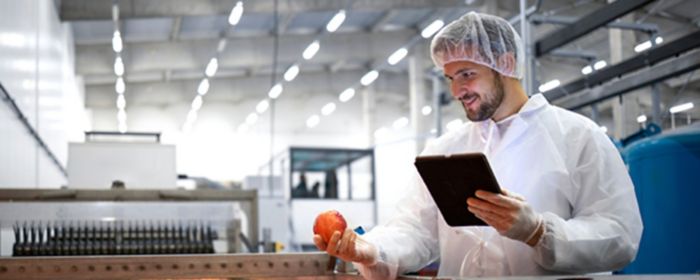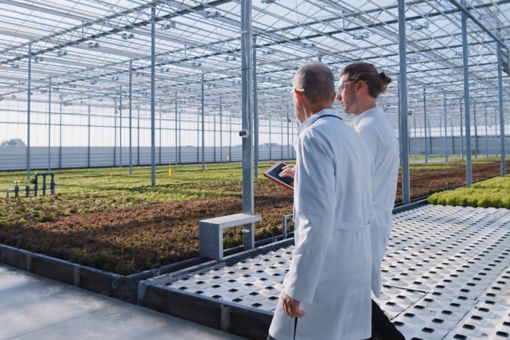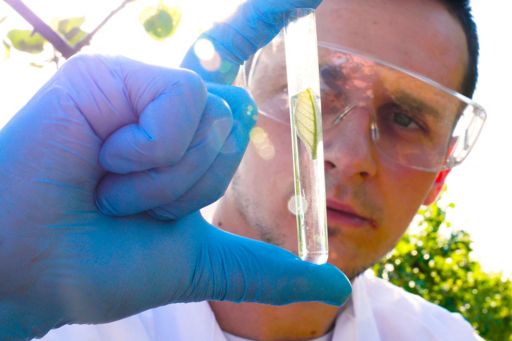Threats to global food security from climate change and geopolitical conflict, disruptions in supply chains, rising costs and labour shortages, and a growing global population are urgently driving the need for innovative approaches in food production to ensure food security for all. It also means what we eat could change dramatically in the coming years.
The first two articles in our Feeding Canada series explored food trust and knowing where our food comes from, as well as the rising cost of food production and the threat to food security. The future of food production means doing more with less, embracing a more sustainable circular economy, and using technology to be more efficient. It will require new methods of farming to mitigate the effects of climate change and producing new sources of food in different environments or different locations to sustain larger numbers of people worldwide.
Indeed, we predict that what we eat, how it’s produced, and how it gets from farm to table will change dramatically in the next two decades, in response to current challenges—and thanks to technologies such as the Internet of Things (IoT), drones, robots, and artificial intelligence.
There’s an increasingly urgent need to find new ways to source food and become more resilient. Agricultural innovation could help to lower food production costs, helping farmers and producers do more with less—producing greater yields to feed a growing population at home and around the world. And leveraging analytic insights from the supply chain could help stakeholders be more proactive, ensuring the safety and accessibility of food products.
An increase in domestic production could also help to protect the food supply from global disruptions and mitigate supply chain issues. Farmers and producers are already adapting to this new reality. The 2021 Census of Agriculture report1 shows increasing adoption of technology, renewable energy production, and use of sustainable farming practices. For example, Canadian farmers are adopting sustainable land practice methods such as rotational grazing, planting winter cover crops, and having shelterbelts or windbreaks. They’re also adapting to warmer and drier conditions by shifting to more drought-tolerant crops.
Here are six examples where we see an evolution in food production:
Lab-grown meat: Investments in lab-grown, synthetic, and cell-cultured meat are growing, providing alternate forms of protein. Lab-grown meat also reduces contamination from animal waste, as well as the overuse of antibiotics and hormones in animals. However, there are still questions to be answered about whether the nutritional value of lab-grown meat will be the same as animal-based products. Producing cultivated meat also requires significant energy, so using renewable energy to power production will be key to making this a more sustainable option.2Transparency and clear information about new processing and production technologies will be necessary to generate public support and acceptance.
Plant-based food sources: There’s also increasing demand for plant-based foods and ingredients, as more people choose protein-based alternatives for health, environmental, animal welfare, or cultural reasons. Typically, plant-based proteins have a lower water, energy, and carbon footprint; they can also be more easily produced, stored, and transported than animal-based products. These factors make plant-based food sources a possible solution for a growing population. Canada is leading the way in high-quality plant protein and plant-based co-products—such as canola, peas, and pulses—through one of Canada’s five Global Innovation Clusters. The goal is to transform the food processing sector, reduce GHG reductions related to agriculture and food processing, and contribute to food security by building out a resilient value chain.3
Renewable proteins: Aside from lab-grown meat, we’re also seeing the rise of insects as an alternative—and renewable—protein source. Eating insects, or entomophagy, isn’t new in some parts of the world, but it’s still not common practice in the Western world. However, insects are full of protein and rich in micronutrients. Farming insects doesn’t require as much space as livestock and emits lower levels of greenhouse gases.4 Insect meal can be added to food products as well as animal feed, offering comparable protein and nutritional value as fishmeal and soy-based feed.5 Farming and eating insects could provide a viable, renewable source of protein to feed the world’s growing population.
Controlled environments for farming: Climate change is leading to more frequent and severe weather events, such as droughts, floods, extreme heat, and hail. These weather events can be devastating to crops and livestock. New methods of farming—such as vertical and subterranean farming—could be used to produce food domestically year-round, using less water and fewer resources, as well as extend growing seasons and diversify the types of crops we grow. Innovative farming practices can help protect the food chain from climate change, while also protecting Canada from an overreliance on international markets and supply-chain disruptions.
Circular economy: A circular economy is focused on keeping products and materials in use, designing out waste, and regenerating natural systems. For example, instead of throwing away Grade B food products, they could be sold at a discount or used as animal feed. With food insecurity a growing problem worldwide—exacerbated by the effects of climate change—efficiencies in food production and reductions in waste and spoilage could help ensure a more resilient food supply and production capacity. This will be done by sourcing food that has been grown locally and regeneratively, making the most of food by-products, and designing and marketing healthier food.6
Track-and-trace: The development of advanced monitoring of cold supply chains (for temperature-sensitive products), DNA barcoding, and blockchain technology can help to more effectively facilitate trade while ensuring food safety, addressing food fraud, and maintaining biosecurity7. In 2022, the federal government announced funding for development of a real-time track and tracing solution to help protect the livestock industry in the event of disease outbreak.
Key questions for stakeholders
When preparing for the future of food farming and production, here are key questions that stakeholders should be asking:
- How can my product remain attractive to consumers?
- How can I predict future consumer purchasing habits?
- Will I need to provide food that is grown closer to the end consumer?
- How will climate change and future weather events impact my business?
- What is my ESG strategy and what information are consumers asking for?
- What role will technology and artificial intelligence play in my business?
A growing global population, the pressures of climate change, and threats to domestic and international food security are pushing us to transform the way we produce and consume food. In the coming years, farm to table will take on a whole new meaning, as the agricultural sector experiences a significant digital transformation that will lead to more sustainable food production that’s good for Canada—and for the planet.
Farm of the Future solutions
Our Agribusiness practice and Farm of the Future – Ignition Centre experience can help organizations push boundaries in the face of technology disruption. With a global team of developers, engineers, data scientists, and business transformation specialists, we build and deliver digitally enabled technology solutions to help farmers and producers become more efficient, resilient, and sustainable. Contact us to find out how we can help you transition for the future of food, from deploying new technologies to helping with ESG strategy.
- Canada’s 2021 Census of Agriculture: A story about the transformation of the agriculture industry and adaptiveness of Canadian farmers. Government of Canada, S. C. January 2023
- Lab grown meat: how it is made and what are the pros and cons, Eufic
- What we do, Protein Industries Canada
- We will produce and eat food in a whole new way, KPMG, 2021
- The future of Feed: A WWF Roadmap to accelerating insect protein in UK feeds, World Wildlife Foundation, 2021
- Cities and circular economy for food, Ellen MacArthur Foundation, 2019
- A Comparative Study of Canadian and International Food Safety Systems and how to improve Canadians access to safe food. Dalhousie University – Faculty of Agriculture, March 2021
Explore the series
Insights and resources
Connect with us
Stay up to date with what matters to you
Gain access to personalized content based on your interests by signing up today
Connect with us
- Find office locations kpmg.findOfficeLocations
- kpmg.emailUs
- Social media @ KPMG kpmg.socialMedia







